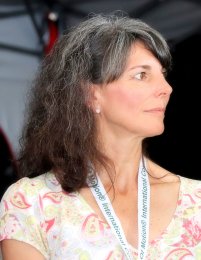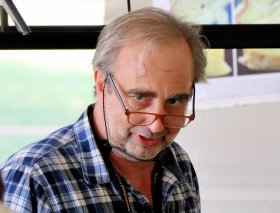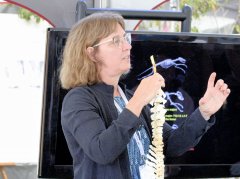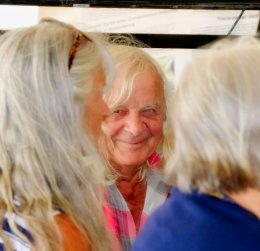The Science of Physiotherapy
The Science of Physiotherapy Through Motion
Jean Luc Cornille
Editor Susan Hopf
Dr. Jean Delsalle was retired from a successful career as veterinarian. He was very well known for his ability to look out of the box and explore unorthodox approaches. He was not a guru. His unorthodox approaches were based on advanced scientific researches modulated by experience. We developed a friendship as I was asking many questions and he was intrigued by what I was doing. He noticed that I changed the kinematics of my horses’ hind and front legs. I explained how, and he pressed me to apply the approach to therapy.
I resisted at first; I improved my horses’ limbs kinematics to create better gaits and win in the show ring. He was intense and exited. “This is a dream coming true. If you can correct aberrant kinematics, you pioneered the most efficient physiotherapy ever created.” He talked sometime about an American veterinarian exploring the thought that the kinematics abnormality was there first, and that it was the repetition of the kinematics abnormality that caused injury. He repeated over and over, “If you can correct the kinematics abnormality you can prevent the injury. Even if it is too late and pathological damages already exist, correcting the kinematics abnormality that is the root cause of the injury greatly enhance the horse’s chances of recovery.” At this time, James Rooney had not yet published his “Biomechanics of Lameness in Horses,” but he must have published papers of his research and Jean Delsalle was aware of them. Two decades later I met James Rooney and asked him more questions.
Rooney was surprised that I applied his principles. With irony, and a touch of sadness, he said, “At the least, one trainer applies my work.” The practical application of advanced research studies is a science that does not fit the paradigm paralyzing scientific studies. The practical application of advanced research studies, commences by learning how to ride, and train, and teach, in the light of actual knowledge. The whole paradigm where the rider causes injury and the veterinarian and the therapist repair the damages, is inverted. The rider indeed, becomes the therapist.
The inversion commences by the reversal of fundamental beliefs. In equines it is not the legs that create back issues, it is dysfunctions of the thoracolumbar spine that induces limbs kinematics abnormalities causing injuries. The source of James Rooney famous statement, “a major cause of lameness is lameness”, commences, in most instances in thoracolumbar column dysfunction. In 1999, Kevin Hausler questioned the usual paradigm suggesting that back problems exist. “Limb disorders are often treated exclusively, without investigating possible structural and functional interactions between the spine, upper limb and lower limb. Even if back soreness is thought to be only a compensation for hock pain or other musculoskeletal disorders, practitioners still have an obligation to evaluate and manage the back problem concurrently. As a profession, our task is to acknowledge that primary back problems do exist in horses.” (Kevin Hausler DVM, DC, PhD, 1999Preface, Veterinry Clinics of North America)
It was a first step toward what we already applied since decades. When I explained to Jean Delsalle that I corrected limbs kinematic abnormalities addressing the dysfunction of the thoracolumbar column, he smiled saying, “That is not going to be easy to push through.” Even today, many blankly refuse the concept but the ones who explore it and see the enormous progresses made by their horse, don’t understand why others still refuse. Educating the back muscles by working the back muscles instead of hoping that lowering the neck at one end and engaging the hind legs at the other end, might flex the back in the middle, opens access to previously inaccessible performances. On the therapeutic side, the evolution to actual science allows non-invasive and effective therapies. Several members of the Science of Motion have successfully rehabilitated their own horse or their customers’ horses from kissing spine, following the Science of Motion’s muscular approach. The muscular approach identifies and corrects the thoracolumbar column dysfunction causing intermittent contact of the dorsal spines.
 Ronda Hanning rehabilitated her giant horse, 18.2 hands, from kissing spine and recorded the whole process on video. Radio-graphs exposed pathological damages between T13 and T14. The rehabilitation was made entirely correcting the back-muscle dysfunction causing the dorsal spines to touch. No injection, no shock wave, no surgery. A methodic reeducation of the back muscles, in hand first, and then riding the horse. The horse recovered fully and in fact performed better after the rehabilitation as his back muscles were properly developed and coordinated.
Ronda Hanning rehabilitated her giant horse, 18.2 hands, from kissing spine and recorded the whole process on video. Radio-graphs exposed pathological damages between T13 and T14. The rehabilitation was made entirely correcting the back-muscle dysfunction causing the dorsal spines to touch. No injection, no shock wave, no surgery. A methodic reeducation of the back muscles, in hand first, and then riding the horse. The horse recovered fully and in fact performed better after the rehabilitation as his back muscles were properly developed and coordinated.
Yes, the approach demands knowledge, commitment, and work, but it is a work of love. The greatness of bringing a close friend back to proper function and soundness, has no equal. The trainers who rehabilitated their customer’s horse have developed a deep bond with the horse. They discovered the real meaning of training, working with a partner ready to work hard to regain his soundness but needing our knowledge and analysis. Whatever the aim is restoring soundness from kissing spine or teaching the body coordination allowing the mastery of a high difficulty movement, the partnership reaches a level of deep friendship where two intelligent beings work together in their respective abilities for a common goal. Of course it is not simple, of course it is complex but it can be clearly explained.
“In equitation as in politics, we should beware of over-simplification; this nearly always complicates matters in the end”. (General Decarpentry, Academic Equitation.) In 1949, there was very little knowledge of the underlying biomechanical factors. Dressage movements were explained based on the look, experience and feeling. Already at this level the classical author feels that he had to warn against simplification. Lack of understanding of the underlying biomechanics factors, did not permit accurate explanation of our predecessors’ wisdom. Simplification always has been and still is the major handicap separating horses and riders from the benefits of actual knowledge. With the evolution of knowledge, the equine biological mechanism became more complex every day, but the capacity to explain it clearly also evolves with knowledge. Concepts such as tensegrity, elastic energy, power transport, add a dimension that our ancestors were not aware of and the gestures promoted by our ancestors do not prepare for the understanding of elastic energy. “Most of the length change required for the work of locomotion, occurs not in the muscle fibers themselves but by elastic recoil of the associated tendons and muscles aponeurosis.” (The role of the extrinsic thoracic limbmuscles in equine locomotion. R. C. Payne, P. Veenman and A. M. Wilson. J. Anat. (2005) 206, pp 193-404)..
Proper functioning of the equine thoracolumbar spine is fascinatingly complex and marvelously sophisticated. Knowledge cans raise our equitation to a harmony with the horse mind and body that old theories cannot teach. Knowledge does not make it simpler but it makes it clearer. Through the rehabilitation of her horse, Rhonda mastered the concept of the back correcting the limbs and explains it in very clear words. “The work of the back muscles is to protect the spine from excessive range of motion and direct forces created by and to the limbs. Misdirection of these forces by the back result in kinematic abnormalities that then result in lameness if not addressed. Proper direction of the forces by the back result in proper kinematics which protect the limbs and result in soundness. Therefore, all limbs lameness other than physical injury by a blow or accident start first in the back and it is through correction of the back that the lameness can be reversed.” (Ronda Hanning)
Dr. Gian Piero Brigati DVM, delighted the auditors of last year International Conference by a very clear, documented and fascinating explanation of how and why he evolved from injecting the horses’ joints regularly to an approach focusing on sophisticated understanding of how the hoof functions and how to upgrade shoeing and trimming to actual knowledge.  Dr. Gian Piero Brigati and the Science of Motion are now teaming up to explain the dynamics involving the hoof and the direction, duration, intensity and frequency of the forces acting from the body down to the leg and the hoof.
Dr. Gian Piero Brigati and the Science of Motion are now teaming up to explain the dynamics involving the hoof and the direction, duration, intensity and frequency of the forces acting from the body down to the leg and the hoof.
The practical application of science liberates and further educates the riders and the horses’ talent. Lameness does not have to be the cost of success. When success is the outcome of an education developing and coordinating the horse physique for the athletic demand of the performance, success and soundness are synonymous. Simplification is a handicap; clarity is a gift.  During the upcoming International Conference, Dr. Betsy Uhl, DVM Ph.D DACVP is going to explain with her well known, eloquence, pertinence, and clarity how compressive forces and therefore riding and training techniques compressing the horse between the hands and the legs, are likely responsible for the epidemic of cervical vertebrae arthritis that is currently observed in the veterinary equine hospitals. Dr. Betsy Uhl and the Science of Motion team-up to explain how riding and training principles can be the best physiotherapy.
During the upcoming International Conference, Dr. Betsy Uhl, DVM Ph.D DACVP is going to explain with her well known, eloquence, pertinence, and clarity how compressive forces and therefore riding and training techniques compressing the horse between the hands and the legs, are likely responsible for the epidemic of cervical vertebrae arthritis that is currently observed in the veterinary equine hospitals. Dr. Betsy Uhl and the Science of Motion team-up to explain how riding and training principles can be the best physiotherapy.

Jean Luc


 twitter
twitter facebook
facebook google
google pinterest
pinterest linkedin
linkedin